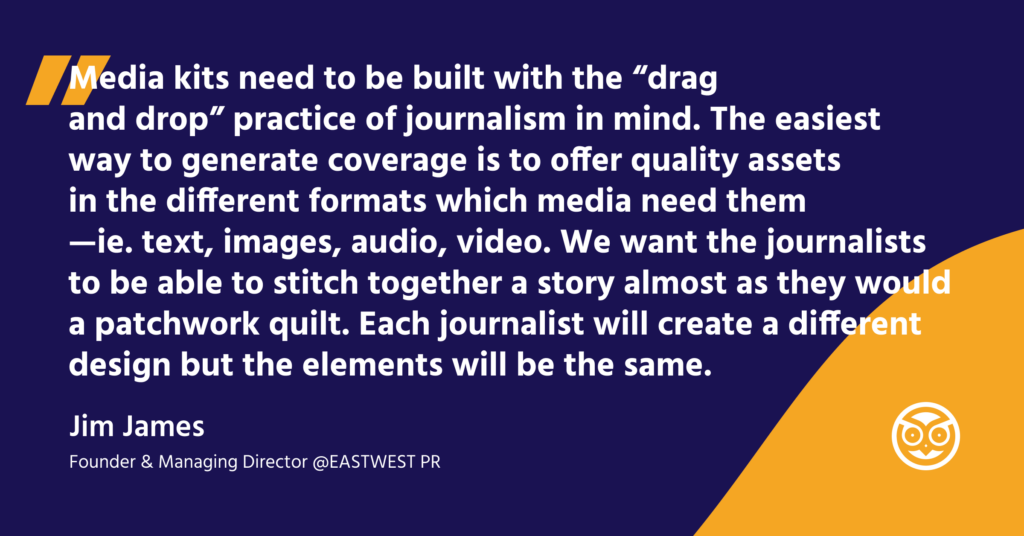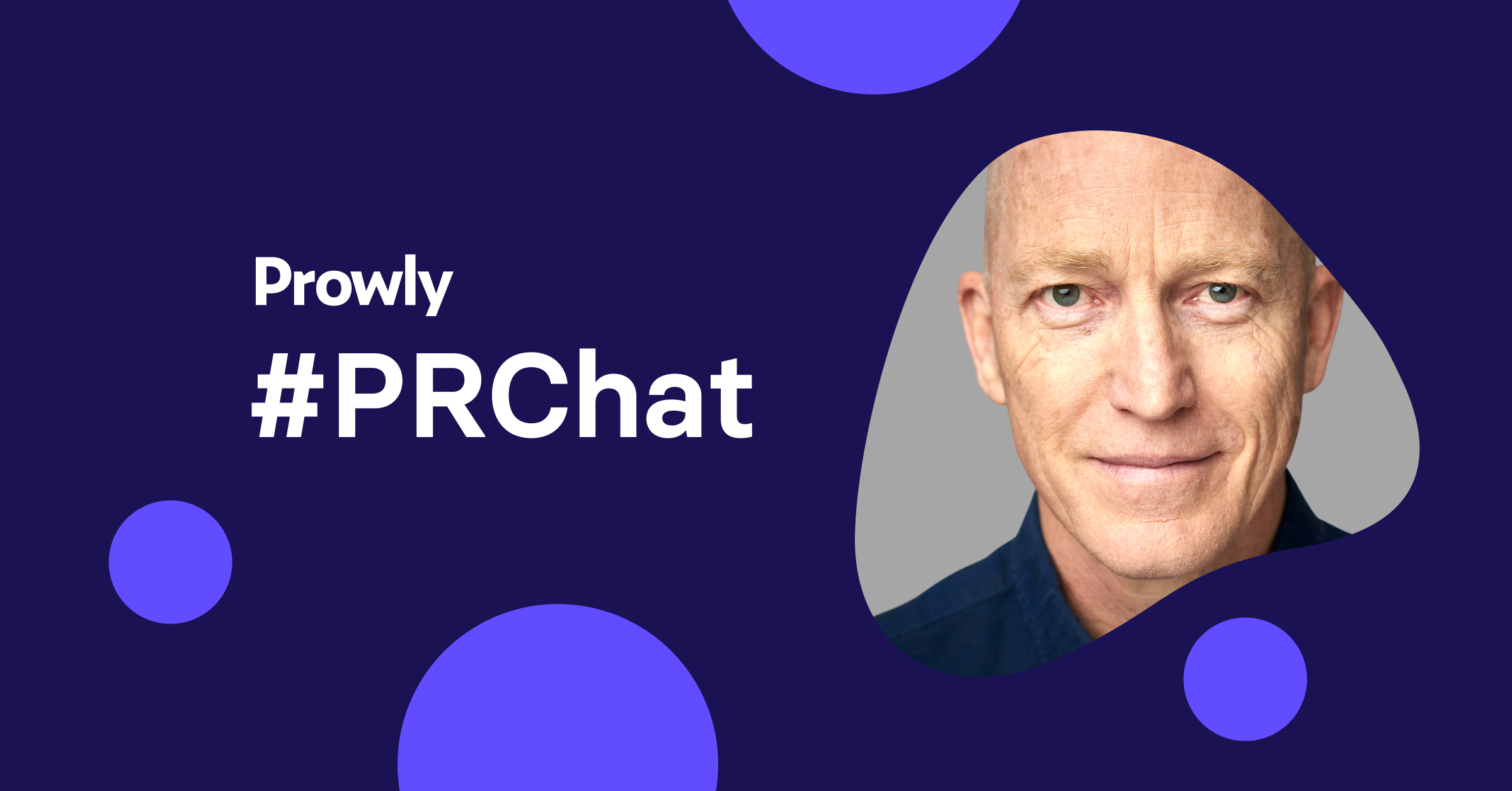It’s Friday again, meaning two amazing things - the weekend is lurking right around the corner and the new #PRChat is here! So take five, grab a cup of hot coffee and dive into an interview with Jim James - PR Counsel & entrepreneur who has amassed over 25 years of experience living in Singapore and China.
As if that wasn’t enough, Jim is host to the top 10 rated podcast "UnNoticed Entrepreneur" and the author of a book of the same title. Using his own words, he’s “on a mission to help entrepreneurs to unlock the value in their business by getting noticed.”
He also led a PR Episodes session about "The Skills You Need to Adapt in the Age of Digital PR" (which you can now watch on demand).
Let’s find the recipe for PR success according to Jim.
What are the top 3 things you learned from managing EASTWEST PR for over 27 years?
- An agency is only as good as the consultant serving the client. Clients engage a great agency and terminate a lackluster consultant.
- Clients become demanding when they feel that the consultant is without a plan.
- Agencies need to innovate 10-15% ahead of the client; too far ahead and the client sees too much risk, not far enough and the client doesn’t see added value.
What inspired you to start a podcast?
I wanted to serve people with a new format of content which builds empathy and is inherently easy to consume on demand. Sharing a voice is more intimate than just words, and a podcast can be used to deliver a conversation between people in a way that the written form doesn’t allow. I’ll also admit that I love the challenge the technology poses; podcasting is at the intersection of creativity and technology.
What PR tactics do you use to promote The UnNoticed Show podcast?
The podcast really is a magical content fountain and, as we know, PR now is about providing earned and owned media with useful information. Each podcast is written into articles which are then shared on our own social channels, but also syndicated by RSS to other sites creating backlinks. I curate the articles in The UnNoticed Entrepreneur books, we’re published up to Volume Two and Three is in production. I entered the book into the British Business Book Awards and was a finalist this year, and that gave me media exposure.
So the podcast itself is not the news, but the content which flows from this fountain of content enables me to offer value to both my own channels and traditional media outlets. The products I create become newsworthy and this then builds my reputation.
Protip: If you're also a book author or a publishing house, here's a step-by-step guide to creating book press releases (and a distribution plan) that might come in handy.
What are the essential press materials to include in a media kit?
Media kits need to be built with the “drag and drop” practice of journalism in mind. The easiest way to generate coverage is to offer quality assets in the different formats which media need them - ie. text, images, audio, video. We want the journalists to be able to stitch together a story almost as they would a patchwork quilt. Each journalist will create a different design but the elements will be the same.

Assets include (assume one set in digital publishing file size (<500k) and one for print (>1mb):
- photos of key people;
- logos in color, b+w, transparent background…in jpeg, Vector file format;
- milestones of the company (infographics);
- industry facts and figures;
- key terms glossary;
- product summary;
- product / service photos & icons;
- brand guidance.
How do you stay in the know about your media contacts and their beat?
The Prowly media platform is now augmenting Twitter lists and reading publications. Having one central resource in Prowly is a salvation as Twitter isn’t built for information management. I do check Twitter for #HARO and #Journorequests but in time I hope that will be also covered in the one platform.
What are five reasons to read your book?
I can’t give you five, but I can give you fifty. Fifty entrepreneurs and experts share their insights in articles which on average take 10 minutes to read; it’s probably the most efficient way to listen to fifty people from around the world explaining everything; from deep listening to artificial intelligence, from content creation to amplification, and as far out as digital empathy.
But let me give you four more:
- it’s an amazing value to learn from 50 experts for less than the price of a meal.
- as an entrepreneur myself, I’ve included what I know will work.
- this is volume two, and number three is on the way so the series is going to look impressive on the shelves.
- the one dot in nineteen represents the 5% of the world who are entrepreneurs. So if you’re part of the 5% this book has you on the cover.
How do you go about tracking media coverage and measuring your PR efforts?
There are two parts here:
A. Measuring effort. I have developed the Active Communications Index which is a simple formula:
Content x Channels x Frequency
Keeping the ACI consistent is the key to effective public relations over time.
Of course, I also use the social media indexes of impressions and engagements, I can’t control the algorithm but I can control my work.
B. In terms of media coverage, I am now starting to use Prowly monitoring and this is proving to be very effective. I like that it is integrated with the distribution platform as we can then see the effectiveness of a press release, and by measuring this we can refine the releases just as advertisers test their assets.
C. The ultimate measure of our PR is an uplift in traffic to the website and dedicated landing pages, as PR in my view lives beyond the funnel but whispers to the audience to come and look over here at what we are doing; to enter our funnel and to start the process of engagement.
Learn "The Skills You Need to Adapt in the Age of Digital PR" from Jim James, Gini Dietrich, and Rebecca Moss during this 30-minute PR Episodes session.
